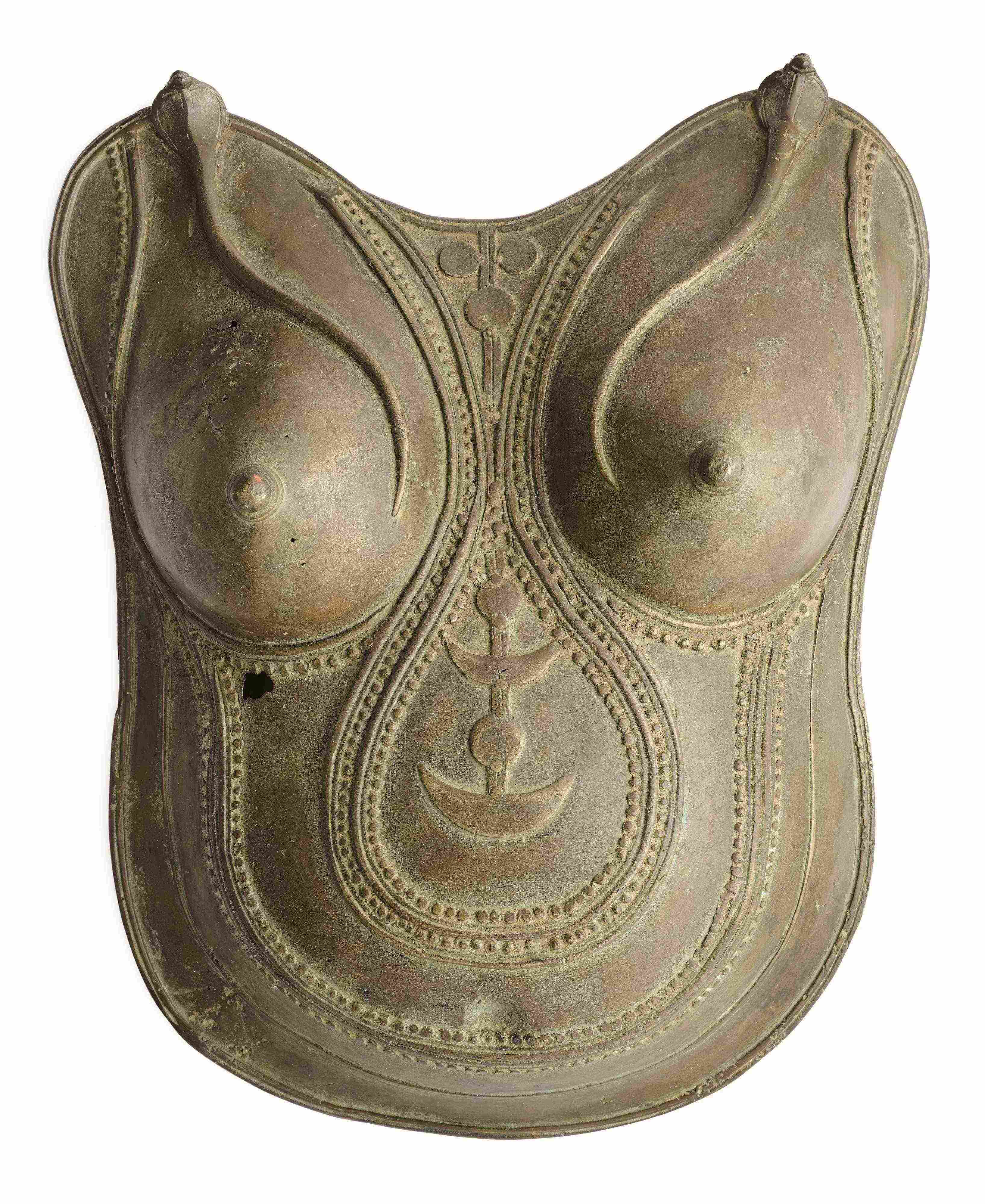

Discover the journey of the breastplate from emulating feminine energy to empowering feminism. By Brijeshwari Gohil.
The Journey of the Breastplate - from emulating the feminine energy to empowering feminism.
There has always been a synergy between art and fashion. Creative designers, dressmakers, have drawn inspiration from art since time immemorial. In the last few years, the breastplate has become a common fashion choice for women across the globe. Singer Mariah Carey, adorned one last year during her performance at the Los Angeles ‘Pride in the Park’ event. The ensemble was part of brand Schiaparelli’s Spring 2023 haute couture collection.
Similarly, artists such as Cardi B, Jennifer Lopez have also been seen wearing the breastplate. From award functions to music videos. The breastplate is being seen as a female armour, empowering feminism. The women wearing them, channelling Wonderwoman in them.
The trend has continued with actors from the Indian film industry also taking to the breastplate. Alia Bhatt walked the ramp for L’Oreal at Paris Fashion in a metallic breastplate by designer Gaurav Gupta while Bhumi Pednakar made headlines for her outfit by Raw Mango. The glass made breastplate with snakes flanked on both sides received a controversial response as many termed it as cultural appropriation. Unfortunately, little is known, more importantly popularised on the cultural history as well as the origin of the breastplate.
In an interview with Vogue India, artist Misha Japanwala, speaks elaborately on the female politics behind her breastplates. Inspired by the female anatomy and body and being an advocate for feminism, she began sculpting breastplates while studying at Parsons. Her armour like breastplate encourages women to take ownership of their bodies and reclaim their narratives. Today, her art is not only worn by celebrities and A-listers but is also bought by art collectors and beautifully placed in homes. This is testimony that art and fashion collide and transcend boundaries.
While women today are using the breastplate as a symbol of feminism and neutralising gender differences and expectations, the breastplate was originally worn by men. Male dancers would wear these armours to impersonate the female, divine Goddess during the Theyyam Festival in Kerala. The dancers would be decked up in all their refinery and regalia, as part of the festival. The ornate and elaborate dress-up would include heavy make up, embellished masks, headgear and jewellery. The breastplate (Lot 173), as seen in Olympia Auctions' upcoming Indian, Islamic, Himalayan and South-East Asian Art Auction, would be cast in bronze, the designs elaborate with motifs including two cobras flanked on each side. The cobra has been associated with Lord Shiva and is prayed to in different forms across India. The motif of the cobra cast in bronze is a tribute to Lord Shiva and also a symbol of fertility. The Theyyam dancers pray to the cobra as they channel the voice and spirit of the female, divine, Goddess.
The festival traces its origins to a time where women were restricted from dancing in public. A similar practice called Bhuta Kola is followed in the neighbouring state of Karnataka. The term ‘Bhuta’ is derived from the Sanskrit root ‘bhu’ which loosely translates to ‘one who has existed’ or ‘spirit.’
The Bhuta is believed to be a local spirit in Karnataka who is believed to interact with devotees and protect the local community from evil. Part of the ceremonial practices during this festival
A spirit form of devotion has been practised by people from ancient times, where comfort and security came from praying to nature and those departed. Religion and idol worship is what then superseded the honouring spirits and worshipping nature. However, many communities and regions continue to practise these rituals and festivals such as Theyyam and Bhuta Kola still use the ornate breastplate.